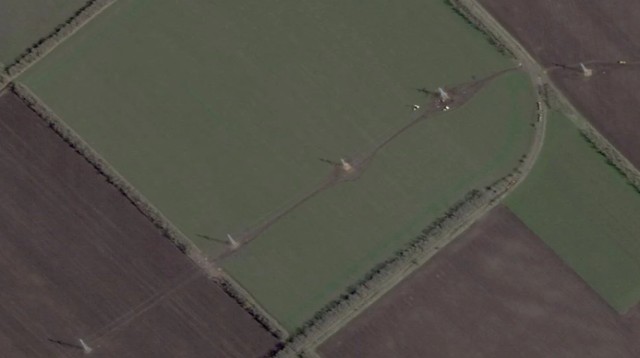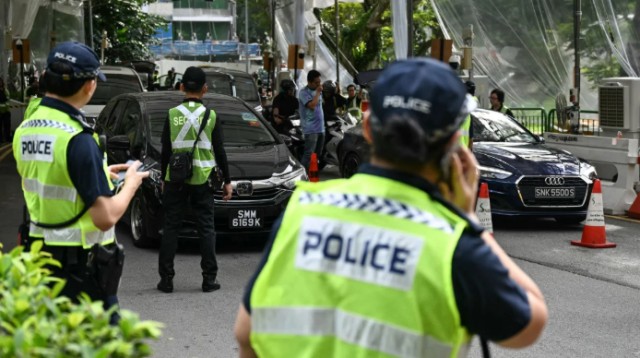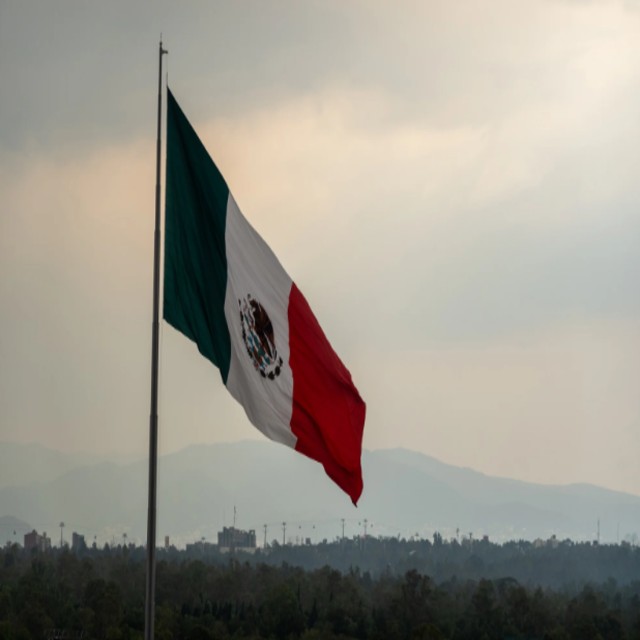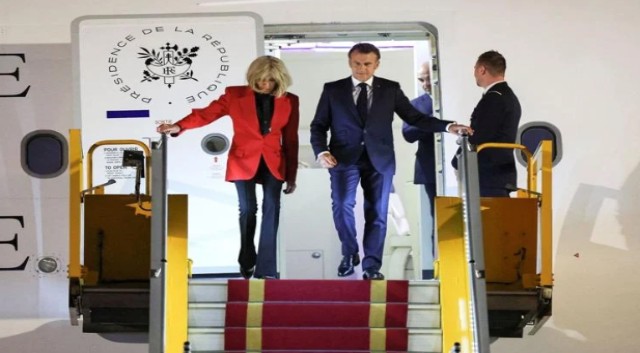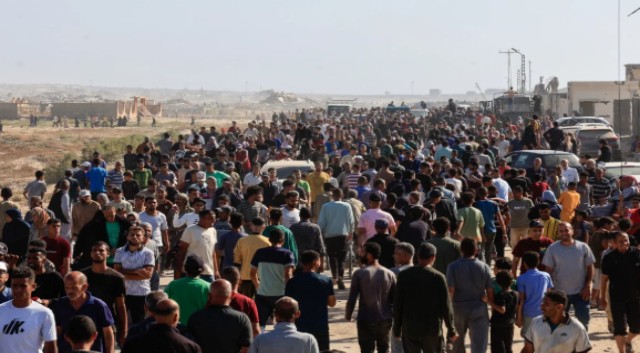
Palestinians gather near an aid distribution site run by the US-backed Gaza Humanitarian Foundation in Rafah, Gaza, on Tuesday.
The first day of humanitarian aid distribution in Gaza ended in chaos, underscoring the urgency of the deepening crisis. Thousands of starving Palestinians rushed a US-backed food site, highlighting the desperation after weeks of near-famine conditions.
Desperation on Full Display
The aid site in Tel al-Sultan, operated by the US-backed Gaza Humanitarian Foundation (GHF), saw a massive and frantic crowd. Fences meant to control the flow of people were torn down. Videos showed people climbing barriers, trying to get to the food.
Wafiq Qdeih, a local resident, summed up the chaos: “They want order, but desperate people just want food and water.”
Israeli Troops Fire Warning Shots
As the crowd surged, Israeli soldiers fired into the air to regain control. American contractors, who were supervising the aid site, temporarily retreated for safety.
A security source confirmed no live fire was directed at civilians. The US-backed team reportedly withdrew to prevent casualties, citing GHF safety protocol.
Long Walks, Endless Lines, Little Hope
Many Palestinians walked for hours to reach the aid site. The overwhelming crowd, long queues, and lack of clear instructions added to the turmoil.
“It’s too far, and the crowd is uncontrollable,” said Abu Ramzi. “We are tired. How can they feed us all like this?”
Critics Slam Aid Plan as Ineffective
Experts and aid workers called the outcome predictable. Amjad al-Shawa from the Palestinian NGO Network said the system was “doomed to fail.”
He added, “You can’t starve people for weeks and expect an orderly distribution.”
The UN has also criticized the approach, warning that it might violate international humanitarian law.
GHF Claims Progress Despite Setbacks
GHF says it has distributed around 8,000 food boxes—roughly 462,000 meals. The goal is to reach 1.2 million people by week’s end, covering 60% of Gaza’s population.
Despite chaos at Tel al-Sultan, GHF plans to open three more sites—two in southern Gaza and one in the center. However, all sites remain absent from northern Gaza, a major concern for human rights organizations.
Aid Sites Located in Evacuation Zones
Two of the new aid sites fall within areas under recent Israeli evacuation orders. Critics argue this limits access and supports Israeli intentions to force Palestinians southward.
Earlier this month, Israeli officials confirmed plans to occupy 75% of Gaza. If realized, this would displace millions into a shrinking space already devastated by conflict.
UN Slams New Aid Mechanism
The United Nations Office for the Coordination of Humanitarian Affairs has called the GHF method unworkable. It warned of severe security risks and lack of compliance with international standards.
UN spokesperson Jens Laerke described the GHF model as a “distraction.” He stressed the need to reopen all border crossings and allow faster clearance for aid supplies.
COGAT Says Aid is Moving—But Slowly
Israel’s Coordinator of Government Activities in the Territories (COGAT) claimed both the new GHF-led and UN-backed mechanisms are now operational. On Tuesday, 95 trucks reportedly entered Gaza.
Still, UNRWA said the volume of permitted aid is far from adequate. They, along with other agencies, are prepared to distribute more aid immediately—if allowed.
Aid Boxes Reveal Hidden Players
Photos from the GHF site show boxes labeled “Rahma Worldwide,” a Michigan-based NGO. Neither the US nor Israel initially named the groups involved in the new plan.
Rahma Worldwide says it serves the world’s most vulnerable, but their involvement adds further scrutiny to an already controversial operation.
Hunger Meets Hesitation
The chaotic aid rollout highlights a growing humanitarian emergency in Gaza. While food is finally trickling in, the flawed distribution model, unsafe conditions, and political tension risk worsening the crisis.
Aid groups and global leaders must act fast to ensure safe, fair, and effective relief for Gaza’s starving population.




